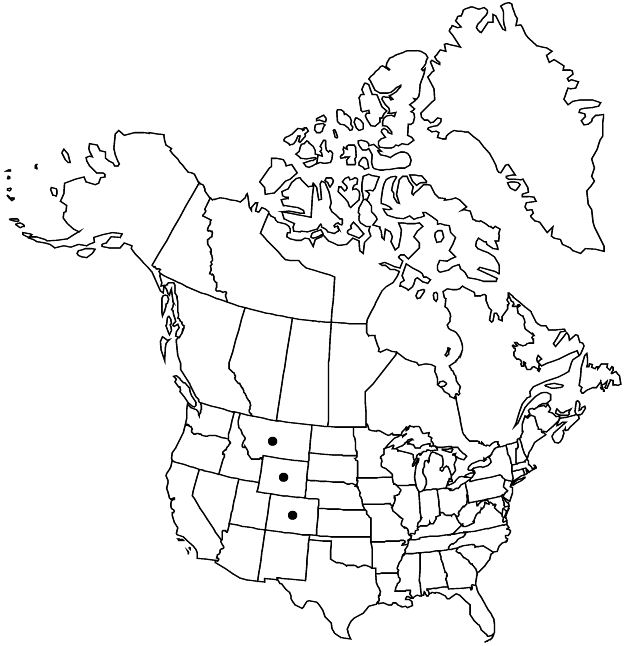Mentzelia pumila
Fl. N. Amer. 1: 535. 1840.
Plants biennial, candelabra-form. Stems solitary, erect, straight; branches distal, distal longest, antrorse, straight; hairy. Leaves: blade 19–82 × 4.8–22.1 mm, widest intersinus distance 2.7–6.7 mm; proximal oblanceolate to elliptic, margins serrate to pinnate, teeth or lobes 10–22, slightly antrorse or perpendicular to leaf axis, 1–5.5 mm; distal elliptic to lanceolate, base not clasping, margins pinnate, lobes 8–14, usually perpendicular to leaf axis, 0.8–7 mm; abaxial surface with simple grappling-hook and complex grappling-hook trichomes, adaxial surface with simple grappling-hook and needlelike trichomes. Bracts: margins entire or toothed. Flowers: petals golden yellow, 7.6–12.3 × 2–3.8 mm, apex usually acute, occasionally rounded, glabrous abaxially; stamens golden yellow, 5 outermost petaloid, filaments narrowly spatulate, slightly clawed, 6.4–11.8 × 1.1–2.7 mm, without anthers, second whorl with anthers; anthers straight after dehiscence, epidermis smooth; styles 5.6–7.8 mm. Capsules cylindric, 10.8–20 × 5.3–7.6 mm, length more than 2 times diam., base tapering, not longitudinally ridged. Seeds: coat anticlinal cell walls straight, papillae 4–5 per cell. 2n = 22.
Phenology: Flowering May–Aug.
Habitat: Hillside slopes, sandy and clayey soils.
Elevation: 1100–2500 m.
Distribution

Colo., Mont., Wyo.
Discussion
The name Mentzelia pumila has been applied variously in regional floras and in other taxonomic treatments of Mentzelia; however, we follow R. J. Hill (1975) and N. H. Holmgren et al. (2005), which are consistent with our phylogenetic results (J. J. Schenk and L. Hufford 2011), in treating M. pumila as a species found only in Wyoming and adjacent areas of Colorado and Montana.
Selected References
None.